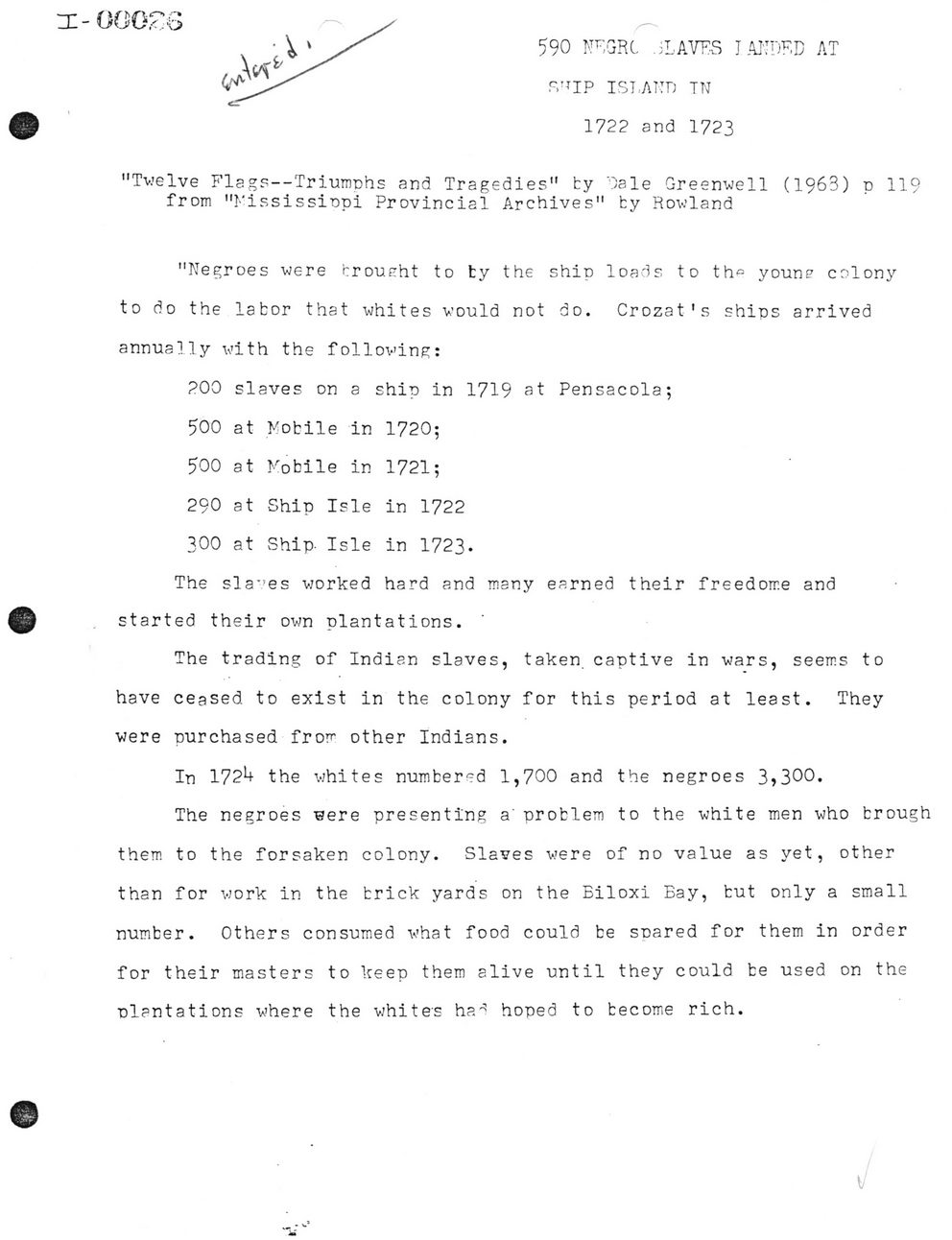This text was obtained via automated optical character recognition.
It has not been edited and may therefore contain several errors.
590 IF.GRl .iLAVES I AI'IDKD AT F.?TIP ISLATTD TN 1722 and 1723 "Twelve Flags--Triumt)hs and Tragedies" by 'Oale Greenwell (1963) p 119 from "Kississiupi Provincial Archives" by Rowland "Negroes were croueht to ty the ship loads to th^ youn? colony to do the labor that whites would not do. Crozat's ships arrived annually with the following: 200 slaves on a ship in 1719 at Pensacola; 500 at Mobile in 1720; 500 at Kobile in 1721; 290 at Ship Isle in 1722 300 at Ship- Isle in 1723* The slaves worked hard and many earned their freedoir.e and started their own plantations. The trading of Indian slaves, taken captive in wars, seems to have ceased, to exist in the colony for this period at least. They vere purchased fror other Indians. In 172*4 the whites numbered 1,700 and the negroes 3?300. The negroes ^ere presenting a' problem to the white men who brough them to the forsaken colony. Slaves were of no value as yet, other than for work in the brick yards on the Biloxi Bay, but only a small number. Others consumed what food could be snared for them in order for their masters to keep them alive until they could be used on the plantations where the whites ha^ hoped to become rich.

Ames, Adelbert 026